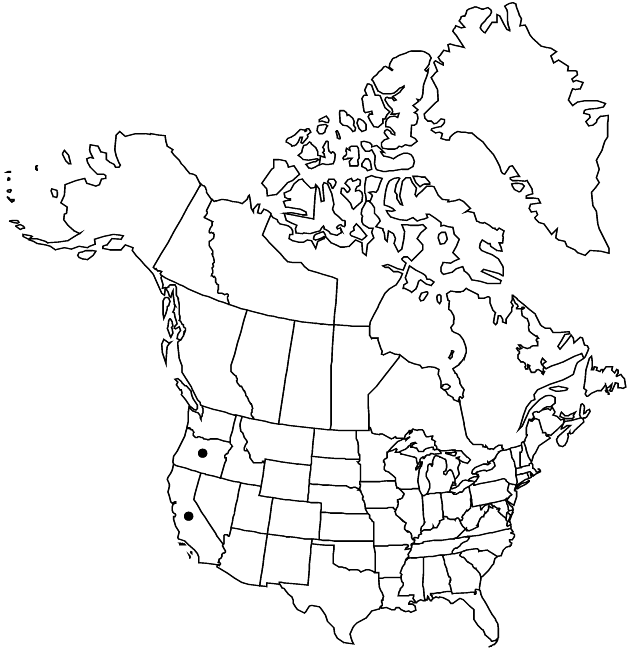Logfia gallica
Ann. Sci. Nat., Bot., sér. 2, 20: 291. 1843.
Plants 2–50[–30] cm. Stems 1–5, ± erect; branches ± leafy between proximal forks, remaining grayish to greenish, arachnoid-sericeous. Leaves mostly subulate, largest 20–30(–40) × 1–1.5(–2) mm, ± stiff; longest capitular leaves 2–5 times head heights, acute or subspinose. Heads in glomerules of (2–)3–10(–14) in strictly dichasiiform arrays, narrowly ampulliform, largest (3–)3.5–4.5 × 2–3 mm. Phyllaries usually 5, equal, unlike paleae (hyaline, obovate). Receptacles fungiform to obovoid, 0.7–0.9 mm, heights 0.8–1.1 times diams. Pistillate paleae (except innermost) 9–12 in 2 series, ± vertically ranked, tightly saccate, inflexed 70–90° proximally, gibbous, ± galeate, longest 3.3–4.1 mm, distal 15–30% of lengths glabrous abaxially; bodies ± bony, ± terete; wings prominent. Innermost paleae ± 5, spreading in 1 series, pistillate. Pistillate florets: outer 9–12 epappose, inner 8–14(–30) pappose. Bisexual florets [2–]3–5; corollas 2.2–3 mm, lobes mostly 4, brownish to yellowish. Cypselae: outer incurved, proximally ± horizontal, distally erect, compressed, [0.8–]0.9–1 mm; inner ± sparsely papillate; pappi of 18–28+ bristles falling in complete or partial rings, 2.2–3 mm. 2n = 28 (former USSR, Portugal).
Phenology: Flowering and fruiting mid Mar–early Jul(–Aug).
Habitat: Mediterranean climates, open slopes, flats, diverse substrates (including serpentine), often ruderal or disturbed sites (especially chaparral burns)
Elevation: 0–1100(–1400) m
Distribution

Calif., Oreg., Eurasia, n Africa, also introduced in Mexico (Baja California), South America, Atlantic Islands, Pacific Islands, Australia.
Discussion
Logfia gallica is introduced in South America, Atlantic Islands, Pacific Islands (Hawaii), Australia, and probably elsewhere.
Logfia gallica is readily recognized by its relatively long and stiff awl-shaped leaves. In the flora, L. gallica is relatively common in the Californian Floristic Province from southwestern Oregon to northwestern Baja California (including the Channel Islands). It is often so well integrated with indigenous vegetation as to appear native. The first known collection in the flora area was from Newcastle, California, around 1883. It had been collected throughout central California by 1935 and had occupied most of its present North American range by 1970.
In the flora area, Logfia gallica tends to grow larger than in its native range.
Selected References
None.